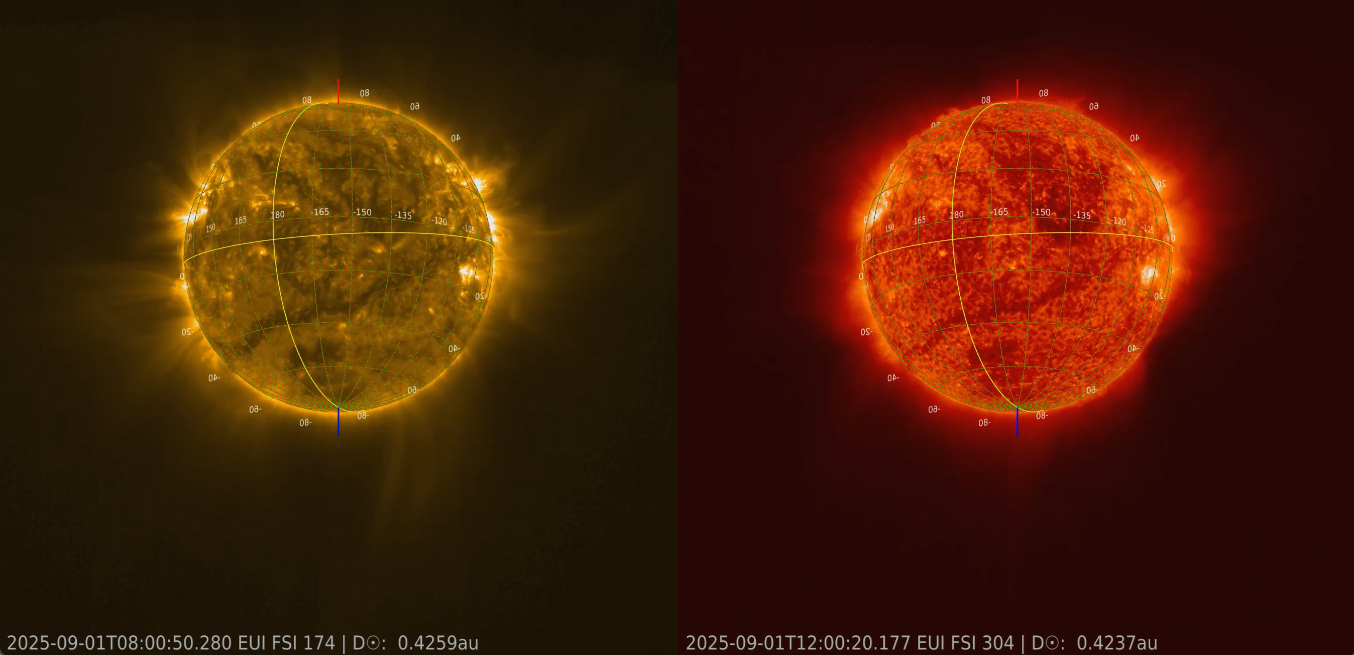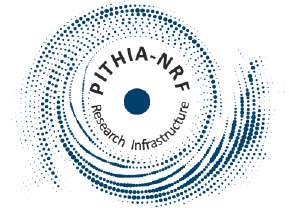September 2025. The space instrument EUI onboard the spacecraft Solar Orbiter, took its millionth solar picture.
Natural hazard on Earth coming from the Sun
The Sun stands for light, warmth, beauty but also for solar weather busting down on Earth. Solar light, solar plasma and solar energetic particles can lead to storms in the earth’s atmosphere and magnetic shield impacting space and earth based technology on which society relies. That’s why we need to keep an eye on the Sun and grasp it in the biggest structures and in the smallest details. The telescope EUI is one of the flagships in fundamental solar research. Its view on details in the solar atmosphere, helps us to understand why the solar wind moves as it moves and what triggers solar storms.
The EUI team has become millionaires!
Click on the picture for the movie. Caption: Overview of the last month of EUI/FSI images as Solar Orbiter is rotating from the back side of the Sun to the front side. The numbers on the solar equator indicate the difference in solar longitude with the Earth. Left FSI@17.4nm in yellow showing the corona, Right FSI@30.4nm in red showing the upper solar transition region.
The download of data from a space telescope like EUI operating in deep space, is limited. Before launch, it was estimated that EUI could bring down a few ten-thousand images per year. Currently, 5 years after the launch, we have collected the 1 millionth image on the ground, meaning EUI is an order of magnitude more productive than foreseen! What happened?
Upgrade on the ground
The ESA Ground Stations that ‘talk’ to the spacecraft have been upgraded in the last few years to a more efficient communications protocol. The communication system of Solar Orbiter already had this advanced system, even if -at the time of launch- no ESA ground station was equipped with it yet. Now, they are. Contrary to early in the mission, this new protocol allows Solar Orbiter to transmit 4 times more data. EUI can take quasi-non-stop images of the Sun and all these images can be sent to Earth. These photoshoots are done at low time cadence.
Another reason for the increased image rate is that the EUI team designed a special flare imaging mode with very short time exposures. These very short exposure images capture the place of the bright peak of the flare and compress for all other locations extremely well. This means we can take more images in the same transmitting volume.






